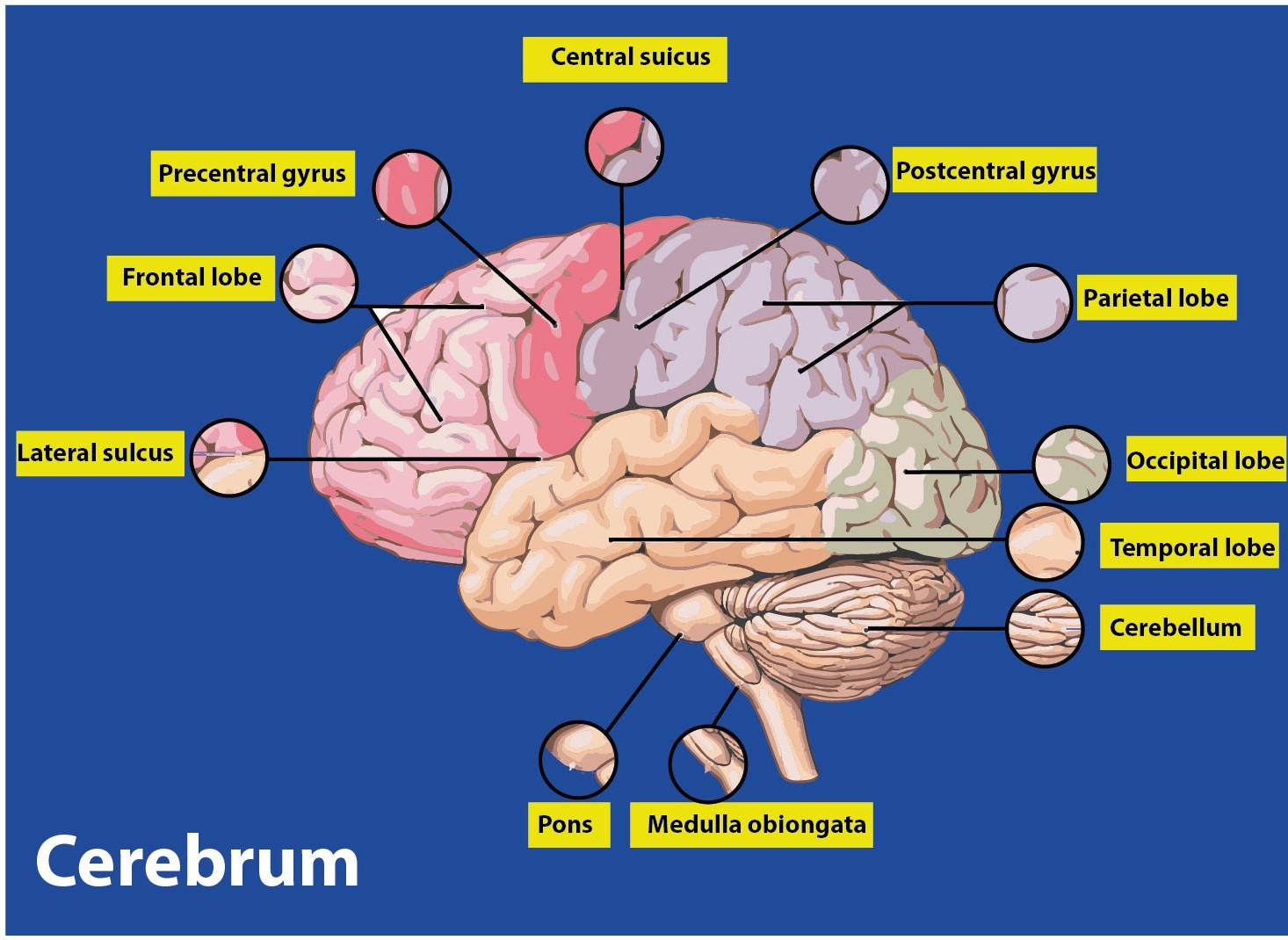
How many lobes do the surface of the cerebral hemisphere pass?
(a) Two
(b) Three
(c) Four
(d) Six
Answer
488.4k+ views
1 likes
Hint: The cerebrum is divided into two parts known as the left and right cerebral hemispheres. These hemispheres are further divided into different lobes on the basis of the functions they are associated with.
Complete Answer:
The cerebrum is the uppermost and largest structure of the forebrain. The cerebrum is divided into 2 hemispheres by a longitudinal fissure. But these two hemispheres are connected to each other by a bundle of nerve fibers known as the corpus callosum. Each of the hemispheres is divided into four lobes known as the frontal, parietal, temporal, and occipital lobe.
Additional information: Let us look at the lobes in detail.
Frontal lobe: It is located at the forward part of the brain and is responsible for reasoning, motor control, emotion, and language. It has Broca’s area which is essential for language production.
Parietal lobe: The parietal lobe is located just behind the frontal lobe and is involved in processing the information from the sense organs of the body.

Temporal lobe: It is located on either side of the head near the temples. It is responsible for hearing, memory, emotion. It has Wernicke’s area which is essential for understanding speech.
Occipital lobe: It is located at the back of the brain and contains the primary visual cortex required for interpreting the visual information coming from the optic nerve.
So, the correct option is ‘(c) Four’.
Note:
- The right hemisphere controls the movement of the left side of the body and the left hemisphere controls the right side of the body.
- Cerebral hemispheres should not be confused with the cerebellar hemispheres which make up the cerebellum.
- Cerebellum is a structure of the brain located in the hind region and is responsible for the coordination of voluntary movements, posture, and balance.
Complete Answer:
The cerebrum is the uppermost and largest structure of the forebrain. The cerebrum is divided into 2 hemispheres by a longitudinal fissure. But these two hemispheres are connected to each other by a bundle of nerve fibers known as the corpus callosum. Each of the hemispheres is divided into four lobes known as the frontal, parietal, temporal, and occipital lobe.
Additional information: Let us look at the lobes in detail.
Frontal lobe: It is located at the forward part of the brain and is responsible for reasoning, motor control, emotion, and language. It has Broca’s area which is essential for language production.
Parietal lobe: The parietal lobe is located just behind the frontal lobe and is involved in processing the information from the sense organs of the body.

Temporal lobe: It is located on either side of the head near the temples. It is responsible for hearing, memory, emotion. It has Wernicke’s area which is essential for understanding speech.
Occipital lobe: It is located at the back of the brain and contains the primary visual cortex required for interpreting the visual information coming from the optic nerve.
So, the correct option is ‘(c) Four’.
Note:
- The right hemisphere controls the movement of the left side of the body and the left hemisphere controls the right side of the body.
- Cerebral hemispheres should not be confused with the cerebellar hemispheres which make up the cerebellum.
- Cerebellum is a structure of the brain located in the hind region and is responsible for the coordination of voluntary movements, posture, and balance.
Latest Vedantu courses for you
Grade 9 | CBSE | SCHOOL | English
Vedantu 9 CBSE Pro Course - (2025-26)
School Full course for CBSE students
₹34,851 per year
Recently Updated Pages
Master Class 11 Business Studies: Engaging Questions & Answers for Success

Master Class 11 Accountancy: Engaging Questions & Answers for Success

Master Class 11 Computer Science: Engaging Questions & Answers for Success

Master Class 11 English: Engaging Questions & Answers for Success

Master Class 11 Social Science: Engaging Questions & Answers for Success

Master Class 11 Economics: Engaging Questions & Answers for Success

Trending doubts
Which one is a true fish A Jellyfish B Starfish C Dogfish class 11 biology CBSE

State and prove Bernoullis theorem class 11 physics CBSE

1 ton equals to A 100 kg B 1000 kg C 10 kg D 10000 class 11 physics CBSE

In which part of the body the blood is purified oxygenation class 11 biology CBSE

One Metric ton is equal to kg A 10000 B 1000 C 100 class 11 physics CBSE

Difference Between Prokaryotic Cells and Eukaryotic Cells




